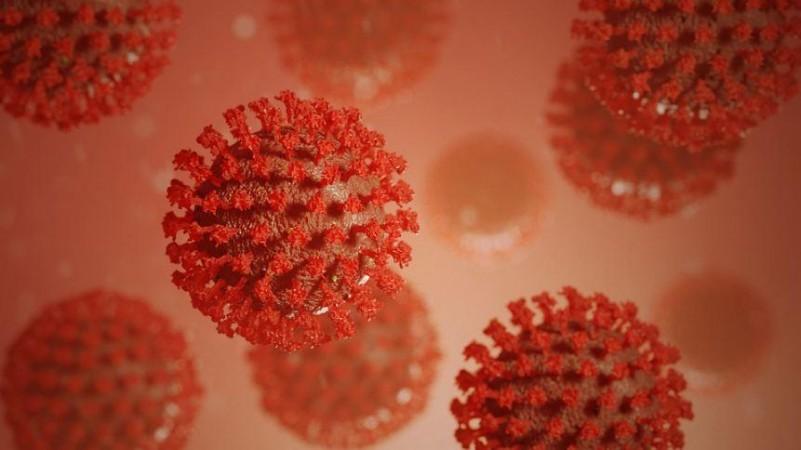Scientific advancements over the course of human history have taught us one thing—the human body is an ocean of mysteries. There is much that remains to be learnt about the specialized systems within it. Now, scientists have reported the discovery of a previously unknown mechanism that acts like a spider's web which traps and kills viruses such as influenza and the SARS-CoV-2 coronavirus (that causes COVID-19).
According to the multi-institutional study, antibody complexes and neutrophils utilize a programmed cell death mechanism called NETosis to counter viruses. After binding with pathogens that are coated with antibodies (IgA), the neutrophils explode and release DNA from within the cell; thereby creating an enmeshing tangle that serves as a trap for the circulating viruses. The study, which was published in the journal Proceedings of the National Academy of Science, holds the potential to further the development of COVID-19 vaccines.
"We describe a function for IgA–virus immune complexes (ICs) during viral infections. We show that IgA–virus ICs potentiate NETosis—the programmed cell-death pathway through which neutrophils release neutrophil extracellular traps (NETs)," the authors wrote.
Giving Rise to a Trap

Neutrophils—which are produced in the bone marrow—are the most abundant WBCs or leukocytes found in the human body, comprising up to 70 percent of all WBCs. They help in clearing out infection and healing damaged tissues. Their levels in the blood naturally increase based as a response to injuries, infections, and other forms of stress. However, their levels may plummet due to genetic conditions, drug treatments, and severe infections.
IgA (Immunoglobulin A)—which consists of two subclasses IgA1 and IgA2—is an antibody that the body uses to ward off illnesses. It is mainly found in the mucous membranes of the digestive tract and the respiratory system. However, IgA is also found in secretions such as breastmilk, saliva, and tears. IgA defends the body by inhibiting the adhesion of viruses and bacteria to cells and enabling neutralization of virus and bacterial toxins through intra- and extracellular methods.
NETosis—which was first described in 2004—is a unique type of cell death where loosened chromatin (a complex of DNA and proteins in the nucleus) and granulated contents within the cell are released outside it. The expelled chromatin act on immobilizing pathogens and prevent their spread within the body. In the current study, the authors discovered the existence of an immunological mechanism that is utilized by these components of the immune system.
A Suicidal Trap for Viruses

For the study, the researchers examined the immune complexes (ICs) produced by IgA with viruses such as HIV, Influenza A, SARS-CoV-2, and ICs produced against Rheumatoid arthritis. ICs are the combination of antibodies with antigens (viruses in this case). They discovered that the ICs potentiated or activated the NETosis function of neutrophils. The result of this activity leads to the formation of the 'spider webs'.
The process begins with the formation of ICs with IgA. Once the complex of the antibody and the viruses are formed, they promote NETosis. This leads to the eventual explosion of the complex which expels chromatin outside the cell. The released matter causes the creation of a sticky 'mess' that traps the viruses and enables their nullification. According to the authors, this mechanism does not use Toll-like receptors (TLR) which are otherwise leveraged in NETosis triggered by viruses alone. The findings are of great significance as very little is known about the neutralization of viruses in the respiratory tract by antibodies.
Potential In COVID-19 Vaccine Development
With COVID-19 leading to the aggressive progress in immunization measures, the team believes that the discovery can advance vaccine delivery and design. This includes the growth of nasal spray and aerosol technologies that can potentially aid the body in intercepting infections even before they can take hold. It can also help mitigate the pitfall of injectable vaccines that are engineered to boost antibodies in the blood but do not necessarily guarantee their prevalence at the site of the infection's origin.

"We should be thinking carefully about next-generation COVID-19 vaccines that could be administered in the respiratory tract to stimulate antibodies. We don't have many candidates right now that are focused on raising the mucosal response," said Hannah Stacey, lead author of the study, in a statement. She added: "If you want a lot of these antibodies that are really abundant in blood, then injections make the most sense, but if you want antibodies that are abundant in the respiratory tract, then a spray or an aerosol makes sense."
Nevertheless, the authors warn that while the spider-web mechanism can be immensely beneficial, it can be harmful as well. This includes inflammation and the worsening of illness when the web formation is out of control. Pointing to the initial waves of the pandemic—before vaccinations commenced—the team noted that these NETs, or neutrophil extracellular traps, were found in the lungs of some patients. This affected their ability to breathe.
"An immune response that is meant to protect you can end up harming you if it's not properly controlled. It's important to understand the balance of the immune system. If you have a lot of these antibodies before you get infected, they are likely going to protect you, but if the infection itself stimulates a lot of those antibodies it might be harmful," cautioned Dr. Matthew Miller, lead author of the study.












!['He is done with the team now' : Angry Virat Kohli slams the bat, kicks the ground, yells at RCB team as SRH smashes runs [reactions]](https://data1.ibtimes.co.in/en/full/796956/he-done-team-now-angry-virat-kohli-slams-bat-kicks-ground-yells-rcb-team-srh-smashes.jpg?w=220&h=138)




